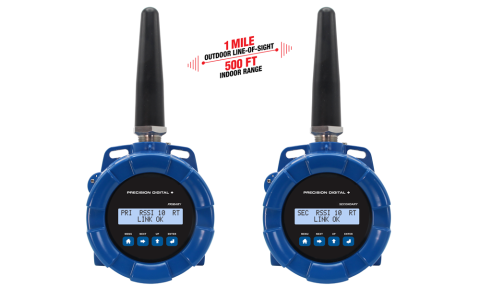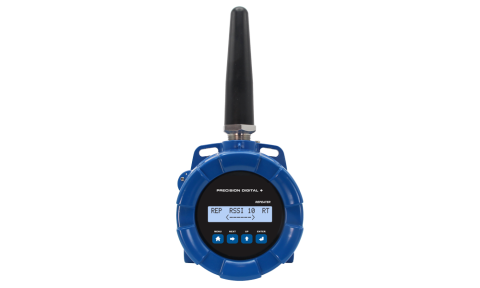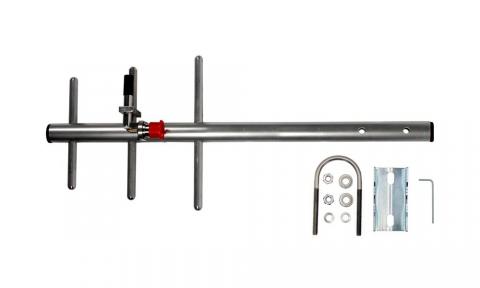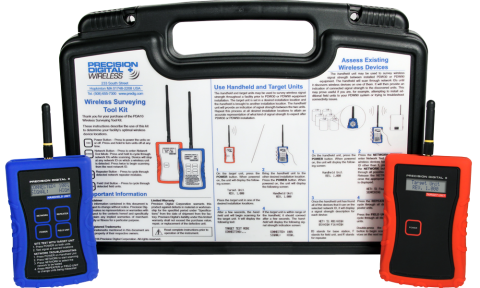The Precision Digital PDW30 provides a simple, straightforward way to get an analog, discrete (digital) or Modbus signal from where you have it to where you need it – without having to run wires! It’s a point-to-point wireless bridge that is virtually plug and play right out of the box.
The PDW30 consists of a primary and a secondary unit and communication between the two is by-directional. That means you can send 4-20 mA, discrete and Modbus signals from the primary unit to the secondary unit and also send completely different 4-20 mA, discrete and Modbus signals from the secondary unit to the primary unit. For instance, the primary unit could send a 4-20 mA signal to the secondary unit corresponding to the level in a tank and the secondary unit could send a 4-20 mA signal to the primary unit to control a valve.
Primary and secondary units are also equipped with four digital I/O that can each be independently programmed as an input or an output. A Loss of Signal warning is also available by connecting devices to the G and LS screw terminals.
To indicate alarm situations, both units can be equipped with an optional, field installable, two relay module. These relays are rated Form A (SPST) 5A.
The specified range between the primary and secondary unit is 1 mile line-of-sight outdoor and 500 feet indoor and repeaters are available to extend the range. A low-cost wireless survey tool, Model PDA10, is available to test the signal strength of your application before you buy. And if the PDW30 system does not work in your application, you can return it for full credit!





